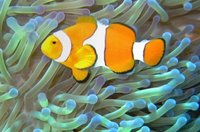- Southampton Middle School
- Communities (L.S. 9)
Edwards, Stephen (Grade 8 Physical Science Teacher)
Page Navigation
-
Communities Key Concepts

• In a community , populations interact with other populations by exhibiting a variety of behaviors that aid in the survival of the population.
• Organisms or populations that rely on each other for basic needs form interdependent communities .
• Energy resources of a community are shared through the interactions of producers, consumers, and decomposers.
• The interaction between a consumer that hunts for another consumer for food is the predator-prey relationship.
• Populations of one species may compete with populations of other species for resources.• Populations of one species may also cooperate with populations of other species for resources.
• A symbiotic relationship may exist between two or more organisms of different species when they live and work together.
• Symbiotic relationships include mutualism (in which both organisms benefit), commensalism (in which one organism benefits and the other is unaffected), and parasitism (in which one organism benefits and the other is harmed).
• Each organism fills a specific role or niche in its community.

